Best Fencing for Agricultural Land in India: Types & Benefits!
Published on July 28, 2025

When it comes to safeguarding your crops and agricultural land, choosing the right fencing is crucial. Fencing acts as the first line of defence, protecting against wildlife, trespassers, and other potential threats. In India, where agriculture is the backbone of the economy, the right fencing not only ensures security but also helps maintain the quality of the land.
Whether you're looking to protect a small plot or a large farm, understanding the best fencing for agricultural land in India can help you make an informed decision.
Selecting the best fence for your agricultural land depends on several factors, including the type of crop you grow, budget, and location. Here’s a look at some common fencing types in India:
Best Fencing for Agricultural Land in India
Selecting the best fencing for agricultural land in India requires careful consideration of factors such as cost, durability, maintenance, and the specific needs of your farm. Below is a detailed guide to the most common types of fencing used in Indian agriculture, along with the advantages and challenges of each option:
1. Barbed Wire Fencing
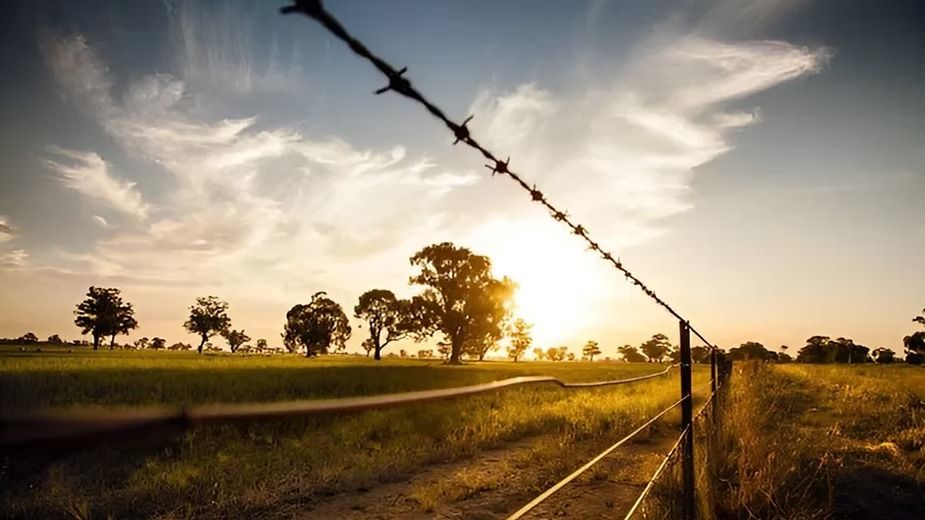
Barbed wire fencing is one of the most affordable and commonly used options for agricultural land in India. It consists of sharp metal wires arranged in twisted strands, creating a physical and psychological barrier for both animals and intruders. Farmers across India prefer barbed wire for its low initial cost and ease of installation. This fencing type is particularly effective for containing smaller livestock like goats or cattle and deterring casual trespassers.
However, barbed wire may not be ideal for areas prone to larger wildlife such as wild boars or elephants, as these animals can break through the barrier. Additionally, barbed wire fences require periodic maintenance to ensure their sharpness and integrity. Despite these drawbacks, it remains one of the best fencing for agricultural land in India where cost efficiency and ease of installation are prioritized.
2. Chain Link Fencing
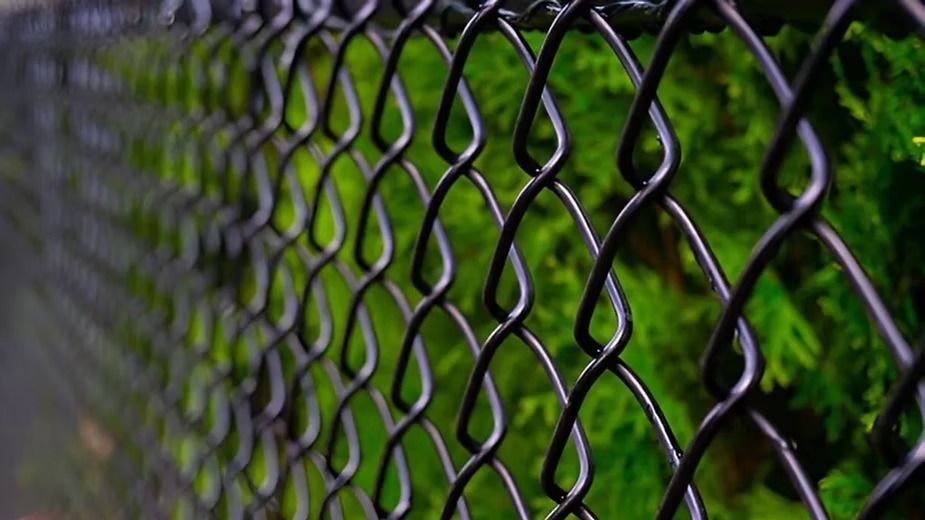
Chain link fencing is a more durable option compared to barbed wire. Made from interlocking galvanized metal wires, it forms a strong mesh that can withstand more pressure, making it ideal for protecting agricultural land from both animal and human intruders. The installation of chain link fences is relatively straightforward, but they provide a stronger and longer-lasting solution.
While this fencing type offers enhanced security, it is more expensive to install, especially for large properties. However, chain link fences require minimal maintenance, making them cost-effective in the long run. This option is well-suited for farmers looking for a more robust fence, particularly when keeping livestock in or out. For larger farms requiring solid protection, chain link fencing is one of the best fencing options for agricultural land in India.
3. Electric Fencing
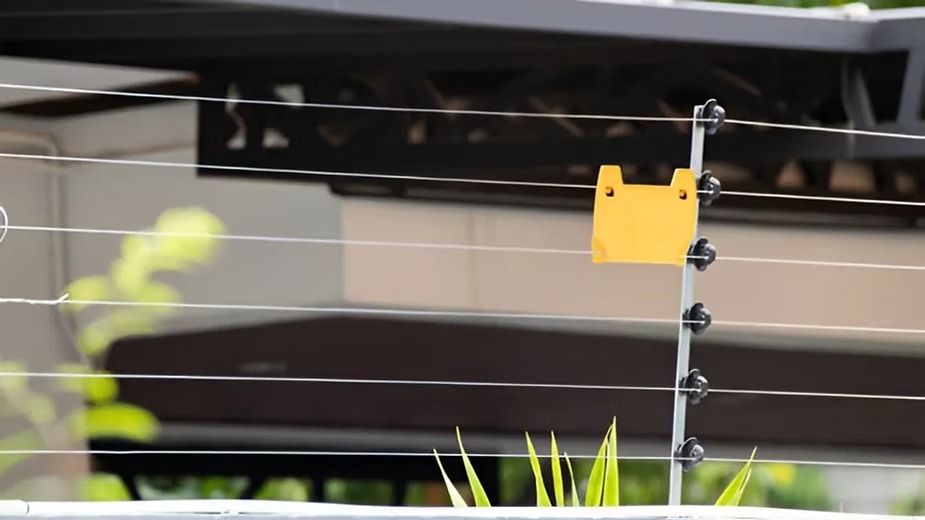
Electric fencing is highly effective, especially for areas with a lot of wildlife or where large animals pose a threat to crops and livestock. It works by delivering a mild electric shock when touched, deterring both animals and humans from crossing the boundary. Electric fences are frequently used in wildlife-prone areas of India to keep animals like deer, wild boars, and even elephants away from the farm.
The initial setup costs for electric fencing can be high, and it requires a constant power supply, which may increase maintenance costs. However, for farmers located in regions with regular wildlife threats, electric fencing can be considered the best fencing for agricultural land in India due to its effectiveness at keeping large animals at bay. It’s particularly valuable in forested areas or near wildlife reserves.
4. Solar Fencing
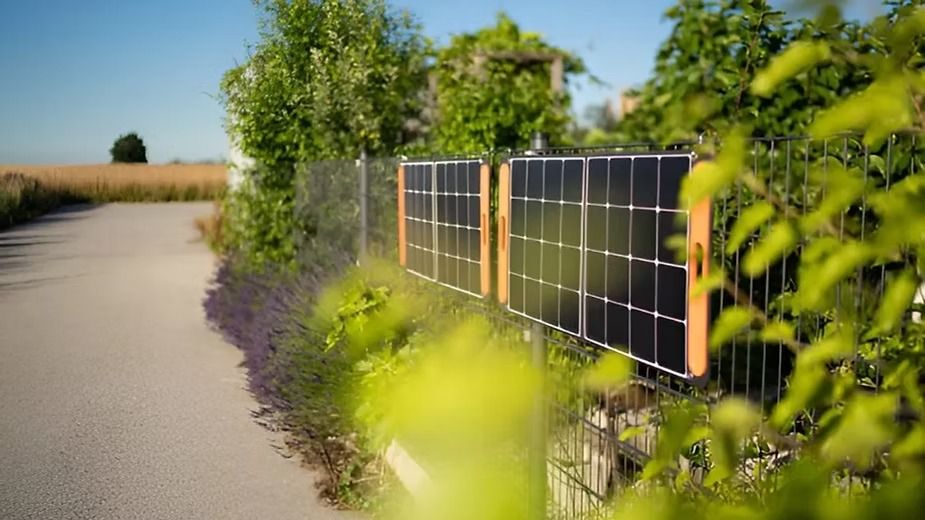
Solar fencing is an eco-friendly alternative to traditional electric fences and is ideal for farms in remote areas with limited access to electricity. Solar panels power these fences, allowing them to function efficiently without a constant grid connection. Like electric fences, solar fencing provides a mild shock to deter animals and intruders.
While solar fencing has a higher upfront cost compared to other types, the long-term savings on electricity make it a sustainable investment. Additionally, it requires minimal maintenance and offers excellent protection in wildlife-heavy regions. Farmers seeking a greener alternative for security often view solar fencing as one of the best fencing for agricultural land in India.
5. Stone Fencing
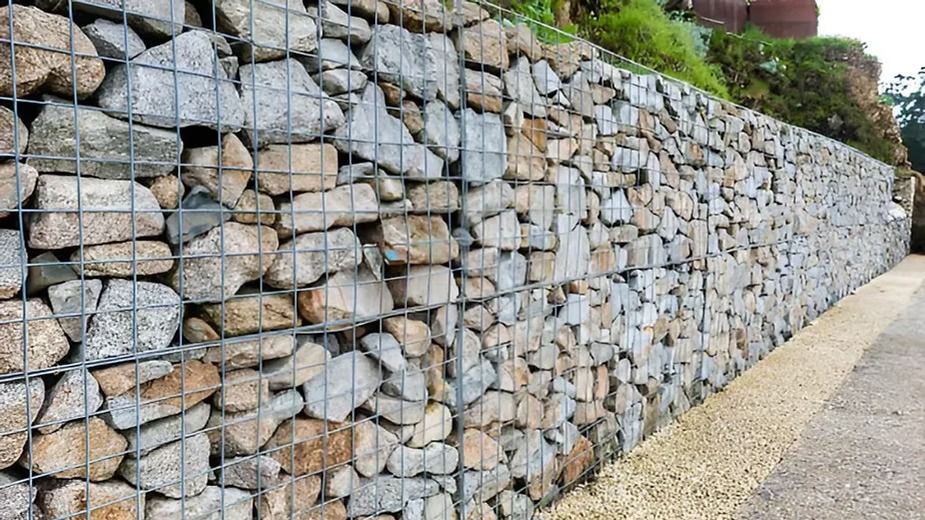
Stone fencing is a traditional option that offers durability and longevity. Constructed using natural stone, this type of fencing is nearly indestructible, making it one of the most secure options available. Stone fences blend well with the landscape, offering a natural aesthetic that appeals to farmers seeking a rustic look.
However, stone fencing is labour-intensive and expensive to install, which limits its use to smaller farms or specific sections of a property. Once installed, it requires little to no maintenance and can last for decades, making it a long-term investment. For farms that need an indestructible boundary, stone fencing is a strong contender among the best fencing for agricultural land in India.
6. Bamboo Fencing
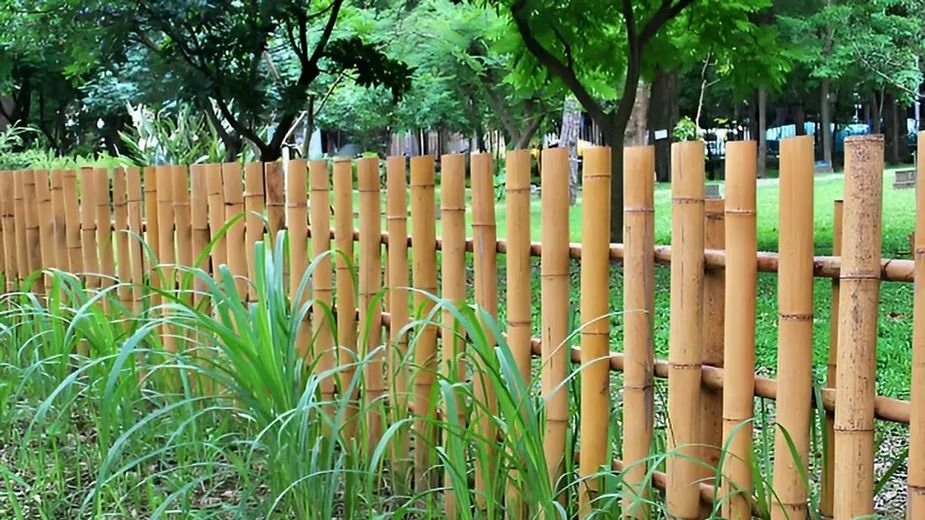
Bamboo fencing is an eco-friendly and cost-effective option, particularly suitable for farmers who prioritize sustainability. Bamboo is widely available in India, making it an affordable material to source and install. This fencing type is easy to erect and adds a natural charm to the farm’s appearance.
However, bamboo fencing doesn’t offer the same level of security as other materials like chain link or stone. It may not be effective for deterring large animals or intruders, but it works well for smaller farms that need a lightweight and environmentally friendly solution. Bamboo fencing is ideal for farmers who want a budget-friendly and green option, but they may need to pair it with additional security measures depending on the farm’s location and wildlife risks.
Additional Fencing Types to Consider
1. Wooden Fencing
Wooden fencing provides both functionality and aesthetic appeal. It can be used for livestock management or simply to improve the appearance of the farm. Wooden fences can be customized in height and style, making them versatile.
However, they do require regular maintenance, including painting or staining to prevent damage from weather conditions and pests. Despite the maintenance, wooden fencing remains popular due to its natural look and ease of repair.
2. Wrought Iron Fencing
Wrought iron is a premium fencing material that offers both beauty and security. It’s extremely durable and can withstand harsh environmental conditions. However, due to its high cost and the labour involved in the installation, it’s generally reserved for high-security areas or to enhance the entryway of a farm.
If you’re seeking a long-term, visually appealing option, wrought iron could be among the best fencing for agricultural land in India, particularly where budget is not a concern.
3. Vinyl Fencing
Vinyl fencing is a modern alternative that combines durability with low maintenance. Resistant to rust, rot, and pests, vinyl fences can last for decades without requiring significant upkeep.
The initial cost is higher than traditional options like barbed wire, but the durability makes it a good investment for farmers looking for a low-maintenance option that can withstand India’s varying climate.
4. Shade Net Fencing
Shade net fencing is a specialized option, designed to provide shade and protection for crops that are sensitive to direct sunlight. It is also effective for reducing wind and preventing soil erosion.
While not ideal for security purposes, shade net fencing can be useful for protecting delicate plants and managing the farm’s microclimate.
The Cost of Fencing
The cost of fencing for agricultural land in India varies greatly depending on the type of fence, materials used, and the size of the area. Here’s a breakdown of some common fencing types and their associated costs:
Barbed Wire Fencing: This is one of the most cost-effective solutions, ideal for budget-conscious farmers. The price ranges from ₹70 to ₹120 per running meter. Barbed wire fences are often used on leased land or for temporary setups, providing a decent level of security but may not be suitable for larger wildlife.
Chain Link Fencing: A more durable and secure option than barbed wire, chain link fencing can range from ₹150 to ₹400 per running meter. While the initial cost is higher, its long-lasting protection against both animals and intruders makes it a worthwhile investment for larger areas.
Electric Fencing: Electric fences, particularly popular in wildlife-prone areas, can cost around ₹200 to ₹300 per running meter. This type of fencing is highly effective for keeping out large animals like elephants, but it requires ongoing maintenance costs due to the need for a constant power supply.
Solar Fencing: Solar-powered electric fencing is a more eco-friendly alternative. Though the upfront cost is higher, ranging from ₹300 to ₹500 per running meter, it saves on electricity costs in the long term. This option is particularly ideal for remote areas with limited access to electricity.
Bamboo Fencing: For a more environmentally friendly and cost-effective choice, bamboo fencing costs around ₹50 to ₹200 per running meter, depending on the quality of the bamboo used. However, its lower durability means it might not offer the same level of protection as more robust materials like chain link or electric fences.
When choosing the best fencing for agricultural land in India, it’s essential to consider the upfront costs alongside the long-term maintenance and durability to make the right investment for your land.
On average, fencing 1 acre of land can cost between ₹50,000 to ₹2,00,000 depending on the type of fencing used.
Advantages of Fencing for Agricultural Land
Choosing the best fencing for agricultural land in India can provide numerous benefits beyond just keeping your property enclosed. Let’s look at how a well-maintained fence can enhance both productivity and security on your farm.
1. Security
A sturdy and durable fence is vital for protecting your crops and livestock from wild animals, unauthorized people, and potential thieves. The best fencing for agricultural land in India not only keeps your property secure but also acts as a deterrent to predators and vandals. For farmers managing livestock, a reliable fence prevents animals from wandering off and keeps them safe from harm.
2. Clear Boundaries
Agricultural fencing is essential for defining land ownership and preventing disputes with neighbouring farms. A well-installed fence marks the limits of your property, giving you peace of mind. This can be especially important when you're working with vast tracts of land. When installing the best fencing for agricultural land in India, you might want to get a property survey to ensure the fence is placed correctly, avoiding any potential boundary conflicts.
3. Increased Productivity
By keeping crops and livestock well-protected, fencing allows farmers to focus on maximizing productivity without worrying about damage, trespassers, or theft. The best fencing for agricultural land in India can help safeguard your investments and maintain the health of your animals by keeping them confined, ensuring they don't stray into potentially hazardous areas.
4. Improved Land Management
Fencing also helps with the segmentation of your farm, allowing for better management of livestock, crops, and crop rotations. The best fencing for agricultural land in India can be used to section off different areas, making it easier to manage tasks such as grazing rotations, quarantine for sick animals, and efficient land use planning.
Factors Affecting Fencing Cost
Several factors influence the overall cost of installing fences on agricultural land:
1. Type of Fence
The material you choose plays a massive role in the cost. Chain link fencing is one of the more budget-friendly options, whereas aluminium, vinyl, or wrought iron fences can be more expensive. For those looking for a high-end solution without the extra expense, wooden fences are a middle-ground option. Best fencing for agricultural land in India can vary based on the material and your budget, so consider the longevity and strength of each material when deciding.
2. Size of Land
Naturally, the larger the area you need to fence, the higher the cost will be due to the amount of material and labour required. A bigger property demands more posts and wires or panels to cover the perimeter. This is an important consideration when selecting the best fencing for agricultural land in India, especially if you are working with expansive plots.
3. Location
Location also impacts the cost, especially in rural or remote areas. If you're setting up your fence far from major suppliers, transportation fees can rise. Additionally, contractors may charge more for labour in hard-to-reach locations. Factoring in logistics when choosing the best fencing for agricultural land in India is crucial, as remote areas may also require specialized fencing to protect against wild animals or other external threats.
3. Terrain
The uneven or hilly terrain makes installation trickier and more expensive. If the land slopes, contractors might have to use special techniques to install the fence properly. For example, in some cases, fencing panels may need to be handmade to match the contours of the land. This added complexity raises the labour and material costs, making terrain an essential factor when determining the best fencing for agricultural land in India.
4. Maintenance
Different fencing materials have varying maintenance requirements. Chain link, vinyl, and aluminium fences need very little upkeep and can last for years, while wooden fences may need periodic staining and repairs. Knowing the long-term costs associated with each material helps when selecting the best fencing for agricultural land in India, as maintenance can significantly add to the total expense over time. High-end fences like stone or wrought iron require much less ongoing maintenance, offering a solid return on investment.
Things to Consider for Farm Fencing Solutions
When it comes to safeguarding your agricultural land, choosing the right fencing can be a challenge. There are several factors to consider, from durability to cost, to ensure the solution fits your specific needs. Here's a breakdown of the top 10 things to keep in mind when selecting the best farm fencing for your agricultural land in India:
1. Life Span
The longevity of your fence depends on the materials used. Chain link and barbed wire fences are made from galvanized wire, which comes in three grades: High Zinc, Medium Zinc, and Low Zinc. For long-term use, opt for High Zinc as it is more durable, while Medium Zinc is suitable for shorter durations. Low Zinc works best for temporary setups, lasting only a few years.
2. Purpose of the Fence
It's essential to identify the purpose of your fence. For long-term protection, particularly for owned land, High Zinc fencing is the best choice. However, for leased lands or shorter time frames (e.g., two years), Medium Zinc or Low Zinc fences can be cost-effective.
3. Installation Cost and Time
Barbed wire is an alternative to chain link fencing and is generally less expensive. However, the installation costs and time required for barbed wire are higher. It’s crucial to factor in both the upfront investment and the time needed for setup when making your decision.
4. Wire Authentication
Always check the authentication of the wire you're purchasing. Ensuring you buy premium, high-zinc galvanized wire can make a significant difference in the lifespan and performance of your fence. Avoid settling for low-zinc wires if you're looking for long-term fencing solutions.
5. Installing the Fence Above Ground
When installing a chain-link fence, it’s advisable to position it at least 2 inches above the ground. This simple measure can significantly increase the lifespan of your fence, as it prevents contact with soil, which can accelerate wear and tear.
6. Adding Stiffness Wire for Support
After your chain link fence is installed, consider adding a horizontal stiffness wire (also called stay wire). Adding 2-3 lines of this wire enhances the strength and stability of your fence, ensuring it doesn’t sag over time.
7. Shade Net for Privacy and Protection
In addition to your fence, you can also install a shade net for added privacy and security. A shade net not only reduces the visibility of your farmland but also helps keep small animals, like chickens, within your farm, preventing them from escaping through gaps in the fence.
Conclusion
Choosing the best fencing for agricultural land in India depends on various factors, such as cost, durability, wildlife protection, and location. Each fence type offers distinct advantages, and farmers must weigh these carefully based on their unique needs. From the cost-effective barbed wire to the robust stone fencing, the right choice will protect your farm while offering long-term value. Whether it’s for security, livestock management, or simply setting boundaries, a good fence is a wise investment for any farmer.
